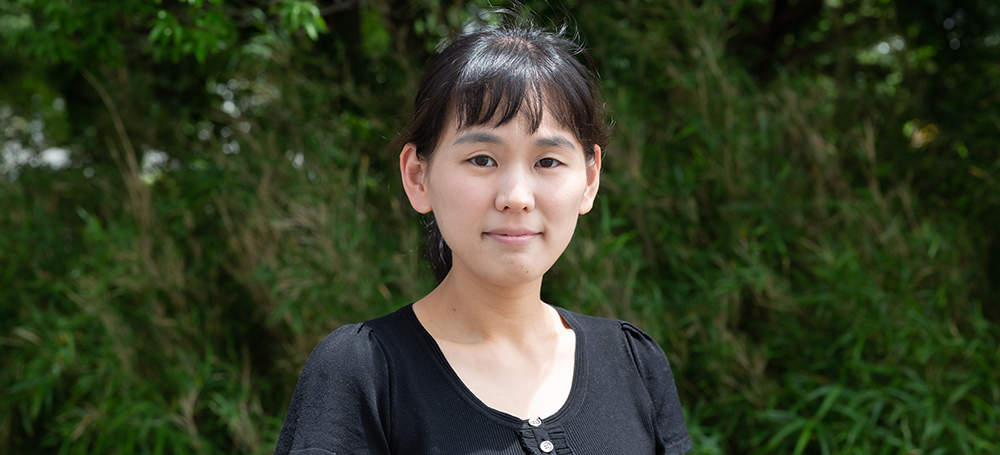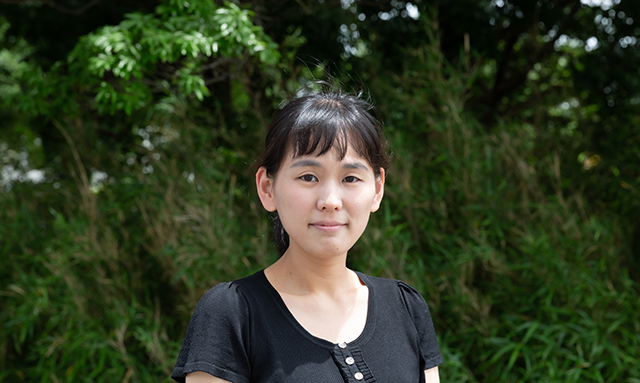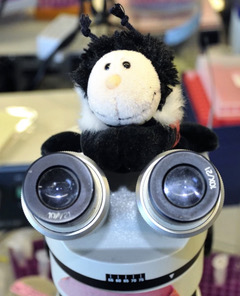Building behavior from the way worms wriggle
Jul. 25, 2019
Amanda Alvarez


Asuka Takeishi is excited by something incredibly small: a worm that is barely one millimeter long. This nematode, with the species name C. elegans, is the focus of a lot of biomedical research around the world, including in Takeishi’s new lab at the RIKEN Center for Brain Science. With only 959 cells in its whole body, C. elegans is a very popular model organism, a mini version of laboratory mice or even humans, used to study everything from aging to addiction. For Takeishi, it’s all about the worm’s behavior. “Our choices, or the worm’s, depend on the situation, feelings, what the body is sensing. In nature all these interact and happen together, but when they are in conflict, how do we decide?” Food may be enticing when you’re hungry but repulsive if you feel sick, and the same attraction and avoidance—to smells, temperatures or other stimuli—can be investigated in the laboratory, from input to output, with C. elegans.
Originally a pharmaceutical scientist, Takeishi traded fruit flies for nematodes when she made the jump to concentrate on neuroscience following her PhD at the University of Tokyo. “We can knock out genes and study the resulting mutant organisms, but I’m interested in the wildtype or natural condition. How is behavior modulated and what are the low-level decisions that guide behaviors?” For this, C. elegans is ideal. It has only 302 neurons whose connections have been completely mapped out. During her postdoctoral work at Brandeis University, Takeishi studied thermosensory behavior in C. elegans. “They like to move towards the temperature at which they were cultivated, for example 20 degrees Celsius,” she explains.

"Takeishi's ladybug in the lab"
After nearly seven years in Boston, Takeishi is now back in Japan, launching her own laboratory under the research theme ‘neural circuit of multisensory integration’ with funding from the RIKEN Hakubi program. As the name implies, the lab will study how neurons talk to each other and guide worms’ behavior based on the sensory environment. “I’m hoping that we can find the fundamental mechanism of behavioral decision making, something that is evolutionarily conserved from worms to humans, and that can ultimately contribute to improving the human community,” says Takeishi.
Worm or human, decision making can be complicated. Takeishi had a hard time picking a major when entering university. She says she settled on pharmaceutical sciences because it allowed a mix of physics, chemistry and biology. “And biology was actually my worst subject in high school, I was more of a physics brain. But in university biology turned out to be completely different, more theory and not just memorization,” Takeishi recalls. Now as a full-fledged neuroscientist, she retains a student’s enthusiasm for experiments. “Thinking about hypotheses and how to reveal facts, it’s a bit of a puzzle. Even negative data generate ideas and responses. When an experiment goes well, maybe only one out of a hundred times, it’s really fun. I want to build a good environment in my lab and have fun in research.” The positive vibe is reflected in a stuffed toy ladybug in her office, a keepsake since the PhD days. “It was from a senior graduate student in the lab, who is now also pursuing academia, a reminder of friends who are also trying their best, even far away.”



